| Mubychem Group, established in 1976, is the pioneer manufacturer of Sodium Perborate, Pharmaceutical, Fragrance & Flavor chemicals in India. Mubychem Group has several manufacturing facilities spread across Gujarat and Mumbai India and world wide contacts and toll manufacturers. We are exporting globally to countries like USA, Canada, Europe, UAE, South Africa, Tanzania, Kenya, Egypt, Nigeria, Uganda, Turkey, Mexico, Brazil, Chile, Argentina, Dubai etc. |
The participating units have one or more accreditations like FDA - GMP approval; ISO-9001 Certified; "REACH"registered; ISO-22000; Kosher Certified;Halal Certified; HACCP. We offer Pure & IP BP USP FCC Food Grade ACS AR Analytical Reagent Grades of Chemicals | |
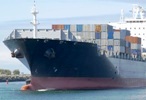

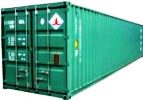

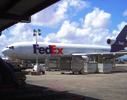

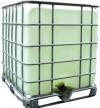
Sodium Perborate SDS MSDS Sheet of Manufacturers
Specifications of Sodium Perborate
Sodium Perborate
Pure and
BP Ph Eur Grades
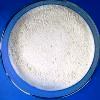
Sodium Perborate Tetrahydrate Monohydrate Anhydrous SDS MSDS Sheet, Material safety Data Sheet
1. Product Identification
Product Name: Sodium Perborate.
CAS No.: 10332-33-9 Monohydrate), 7632-04-4 or 11138-47-9 (Anhydrous), 10486-00-7 (Tetrahydrate)
EINECS: EC Number: 231-556-4 or 234-390-0 (Anhydrous, Monohydrate), 239-172-9 (Tetrahydrate)
Molecular Weight: 81.82 Anhydrous, 99.81 Monohydrate, 153.86 Tetrahydrate
Chemical Formula: BNaO3 Anhydrous, BNaO3.H2O Monohydrate, BNaO3.4H2O Tetrahydrate.
Recommended usage: Industrial Manufacturing.
2. Hazards Identification
GHS, Globally Harmonized System Classification in accordance with 29 CFR 1910
Classification according to Regulation (EC) No 1272/2008
Oxidizing solids Category 3, (H272)
Reproductive toxicity Category 1B, (H360)
Acute toxicity, Oral Category 4, (H302)
Specific target organ toxicity - single exposure Category 3, (H335)
Serious eye damage Category 1, (H318)
Labelling according to GHS & Regulation (EC) No 1272/2008
GHS Label Elements 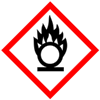 Oxidizing Solid | GHS Label Elements | GHS Label Elements | GHS Label Elements |
Signal word: Danger
Hazard statement(s):
H272 May intensify fire; oxidizer.
H302 Harmful if swallowed.
H318 Causes serious eye damage.
H331 Toxic if inhaled.
H335 May cause respiratory irritation.
H360 May damage fertility or the unborn child.
Precautionary statement(s):
P201 Obtain special instructions before use.
P202: Do not handle until all safety precautions have been read and understood.
P210: Keep away from heat/sparks/open flames/hot surfaces – No smoking.
P220 Keep/Store away from clothing/ combustible materials.
P221: Take any precaution to avoid mixing with combustibles.
P261 Avoid breathing dust/ fume/ gas/ mist/ vapours/ spray.
P264: Wash … thoroughly after handling.
P270: Do not eat, drink or smoke when using this product.
P271: Use only outdoors or in a well-ventilated area.
P280 Wear protective gloves/ eye protection/ face protection.
P330: Rinse mouth.
P304+340: IF INHALED: Remove victim to fresh air and keep at rest in a position comfortable for breathing.
P305 + P351 + P338 IF IN EYES: Rinse cautiously with water for several minutes. Remove contact lenses, if present and easy to do. Continue rinsing.
P370+378: In case of fire: Use Water spray, Foam for extinction.
P301+312: IF SWALLOWED: Call a POISON CENTER or doctor/physician if you feel unwell.
P308+313: IF exposed or concerned: Get medical advice/attention.
P405: Store locked up.
P403+233: Store in a well ventilated place. Keep container tightly closed.
P501: Dispose of contents/container to an authorized agent only.
For the full text of the H-Statements and R-phrases, see Section 16.
Classification according to Directive 67/548/EEC or Directive 1999/45/EC:
T = Toxic
R61-23: May cause harm to the unborn child. Toxic by inhalation.
Xn = Harmful
R62-22: Possible risk of impaired fertility. Harmful if swallowed.
Xi = Irritant
R37-41 = Irritating to respiratory system. Risk of serious damage to eyes.
O = Oxidising
R8 = Contact with combustible material may cause fire.
3. Composition/Information on Ingredients
Product Name: Sodium Perborate.
CAS No.: 10332-33-9 Monohydrate), 7632-04-4 or 11138-47-9 (Anhydrous), 10486-00-7 (Tetrahydrate)
EINECS: EC Number: 231-556-4 or 234-390-0 (Anhydrous, Monohydrate), 239-172-9 (Tetrahydrate)
4. First Aid Measures
Always seek medical attention after first aid measures are provided.
Inhalation: Remove to fresh air. If not breathing, give artificial respiration. If breathing is difficult, give oxygen. Get medical attention.
Ingestion: Never give anything by mouth to an unconscious person. Get medical attention.
Skin Contact: Wipe off excess material from skin then immediately flush skin with plenty of water for at least 15 minutes. Remove contaminated clothing and shoes. Get medical attention. Wash clothing before reuse. Thoroughly clean shoes before reuse.
Eye Contact: Immediately flush eyes with plenty of water for at least 15 minutes, lifting lower and upper eyelids occasionally. Get medical attention immediately.
5. Fire Fighting Measures
Flammability of the Product: Non-flammable but it is an oxidizer.
Products of Combustion: It emits toxic oxides of boron, sodium and fumes when heated to decomposition.
Explosion: Contact with oxidizable substances may cause explosion.
Fire Extinguishing Media: Water spray, Foam. Use means suitable for extinguishing surrounding fire. Avoid carbon dioxide and gas filled extinguisher.
Special Information: Sodium Perborate is an oxidizer. In the event of a fire, wear full protective clothing and NIOSH-approved self-contained breathing apparatus with full face piece operated in the pressure demand or other positive pressure mode. At high temperatures or when moistened under fire conditions, it may produce toxic or irritating fumes.
6. Accidental Release Measures
Small Spill: Eliminate all sources of ignition. Avoid dust formation. Avoid breathing dust. Ensure adequate ventilation. Use appropriate tools to put the spilled solid in a convenient waste disposal container. Finish cleaning by spreading water on the contaminated surface and dispose of according to local and regional authority requirements.
Large Spill: Eliminate all sources of ignition. Do not let the product enter drains. Use a shovel to put the material into a convenient waste disposal container. Finish cleaning by spreading water on the contaminated surface and allow evacuating through the sanitary system if local laws permit.
7. Handling and Storage
Do not breathe dust. Wear suitable protective clothing. In case of insufficient ventilation, wear suitable respiratory equipment.
Avoid contact with skin and eyes. Avoid formation of dust and aerosols. Wash hands thoroughly after handling. Provide appropriate exhaust ventilation at places where dust is formed. If you feel unwell, seek medical attention.
Keep in a tightly closed container, stored in a cool <32C, dry, ventilated area. Protect against physical damage heat or contact with combustible substances.
8. Exposure Controls/Personal Protection
Airborne Exposure Limits: None established. Limit.
Ventilation System: A system of local and/or general exhaust is recommended to keep employee exposures as low as possible. Local exhaust ventilation is generally preferred because it can control the emissions of the contaminant at its source, preventing dispersion of it into the general work area.
Personal Respirators (NIOSH Approved): For conditions of use where exposure to dust or mist is apparent and engineering controls are not feasible, a particulate respirator may be worn. For emergencies or instances where the exposure levels are not known, use a full-face positive-pressure, air-supplied respirator.
Skin Protection: Wear protective gloves and clean body-covering clothing.
Eye Protection: Use chemical safety goggles and/or full face shield where dusting or splashing of solutions is possible. Maintain eye wash fountain and quick-drench facilities in work area.
Other Control Measures: Maintain good housekeeping in work area. Dust deposits on floors and other surfaces may pick up moisture and cause the surfaces to become slippery and present safety hazards. Handle in accordance with good industrial hygiene and safety practice. Wash hands after handling.
9. Physical and Chemical Properties
Appearance: White crystals or powder.
Solubility: Soluble in water.
pH: 10 at 1% solution at 25 C (77F)
Density: NA.
Molecular Weight: As shown in column 1.
Molecular Formula: As shown in column 1.
% Volatile by volume @ 21C (70F): 0
Boiling Point: Not available
Melting Point: Decomposes at 60C
10. Stability and Reactivity
Stability: Sodium Perborate is stable under ordinary conditions of use and storage. It becomes unstable by heat and moisture.
Hazardous Decomposition Products: Oxygen, oxides of sodium, boron oxides and fumes.
Hazardous Polymerization: Will not occur.
Incompatibilities: Organic substances, Strong reducing agents, Powdered metals, Strong bases, Alcohols, phosphorous, Anhydrides, Halogens, Acids Metal powders and Reducing agents. Heat.
Conditions to Avoid: Moisture, Heat, Incompatibles.
11. Toxicological Information
Toxicity to Animals:
ORAL (LD50): 1908 mg/kg (Rat) on anhydrous basis.
ORAL (LD50): 1060 mg/kg [Mouse] on anhydrous basis.
Intravenous (LD50 ): 600 mg/kg (Cat) on anhydrous basis.
Carcinogenic Effects: Not a reported carcinogen.
Mutagenic Effects: Not available.
Teratogenic Effects: Not available.
Developmental Toxicity: Not available.
Chronic Effects on Humans: May cause damage to the following organs: lungs, blood, mucous membranes.
Other Toxic Effects on Humans: Hazardous in case of skin contact (irritant), of ingestion, of inhalation.
12. Ecological Information
Environmental Toxicity:
LC50/96h: 51 mg/l (Brachydanio rerio) on anhydrous basis.
NOEC/48h: 8 mg/l (Daphnia magna) on anhydrous basis.
NOEC/96h: 25 mg/l (Brachydanio rerio) on anhydrous basis.
Results of PBT and vPvB assessment: This substance/mixture contains no components considered to be either persistent, bioaccumulative and toxic (PBT), or very persistent and very bioaccumulative (vPvB) at levels of 0.1% or higher.
13. Disposal Considerations
Whatever cannot be saved for recovery or recycling should be managed in an appropriate and approved waste disposal facility. Processing, use or contamination of this product may change the waste management options. State and local disposal regulations may differ from federal disposal regulations. Dispose of container and unused contents in accordance with federal, state and local requirements. Small amounts of this material may be suitable for sanitary sewer or trash disposal.
14. Transport Information
DOT (USA)
Shipping Name: SODIUM PERBORATE MONOHYDRATE
Hazard Class: 5.1
UN Number: UN3377
Hazard Label: Oxidizer
Packing Group: III
IMDG
Shipping Name: SODIUM PERBORATE MONOHYDRATE
Hazard Class: 5.1
UN Number: UN3377
Hazard Label: Oxidizing Agent
Marine pollutant: No
Packing Group: III
IATA
Shipping Name: SODIUM PERBORATE MONOHYDRATE
Hazard Class: 5.1
UN Number: UN3377
Hazard Label: Oxidizer
Packing Group: III
15. Regulatory Information
USA:
SARA 302: No chemicals in this material are subject to the reporting requirements of SARA Title III, Section 302.
Section 313: No chemicals are reportable under Section 313.
SARA 311/312 Hazards: Fire Hazard, Immediate (Acute) Health Hazard.
California Prop. 65 Components
This product does not contain any chemicals known to State of California to cause cancer, birth defects, or any other reproductive harm.
Canada WHMIS: CLASS C: Oxidizing material. CLASS D-2B: Material causing other toxic effects (TOXIC).
CAS# 10332-33-9 is not listed on Canada's Ingredient Disclosure List.
CAS# 10332-33-9 is listed on Canada's DSL List
CAS# 7632-04-4 is listed on Canada's DSL List
CAS# 7632-04-4 is not listed on Canada's Ingredient Disclosure List.
16. Other Information
H272 = May intensify fire; oxidizer.
H302 = Harmful if swallowed.
H318 = Causes serious eye damage.
H331 = Toxic if inhaled.
H335 = May cause respiratory irritation.
H360 = May damage fertility or the unborn child.
T = Toxic
Xn = Harmful
Xi = Irritant
O = Oxidising
R37-41 = Irritating to respiratory system. Risk of serious damage to eyes.
R62-22 = Possible risk of impaired fertility. Harmful if swallowed.
R61-23 = May cause harm to the unborn child. Toxic by inhalation.
R8 = Contact with combustible material may cause fire.
DISCLAIMER: The information and recommendations set forth herein (hereinafter "Information") are presented in good faith and believed correct as of the date hereof. It is compiled from various sources and it is not necessarily all inclusive nor fully adequate in every circumstance. In addition, these suggestions should not be confused with nor followed in violation of applicable laws, regulations, rules or insurance requirements applicable. This MSDS sheet is intended only as a guide to the appropriate precautionary handling of the material by a properly trained person using this product. Individuals receiving the information must exercise their independent judgment in determining its appropriateness for a particular purpose.
Sodium Perborate BP grade Manufacturers:
MUBYCHEM GROUP
CHINCHBUNDER, MUMBAI 400009, INDIA
TEL: (OFFICE) 91-22-23774610, 91-22- 23723564. 91-22-23728264
e-mail: anmol@pcmenergy.com

Copyright and Usual Disclaimer is Applicable.

Global or International Sodium Perborate BP Grade --- Suppliers, Exporters, Importers, Manufacturers
If I give you “My Word” Nobody can undo it.
If I sign an “Agreement” my Lawyer will undo it
Perfection is made up of small thing but it is not small.



